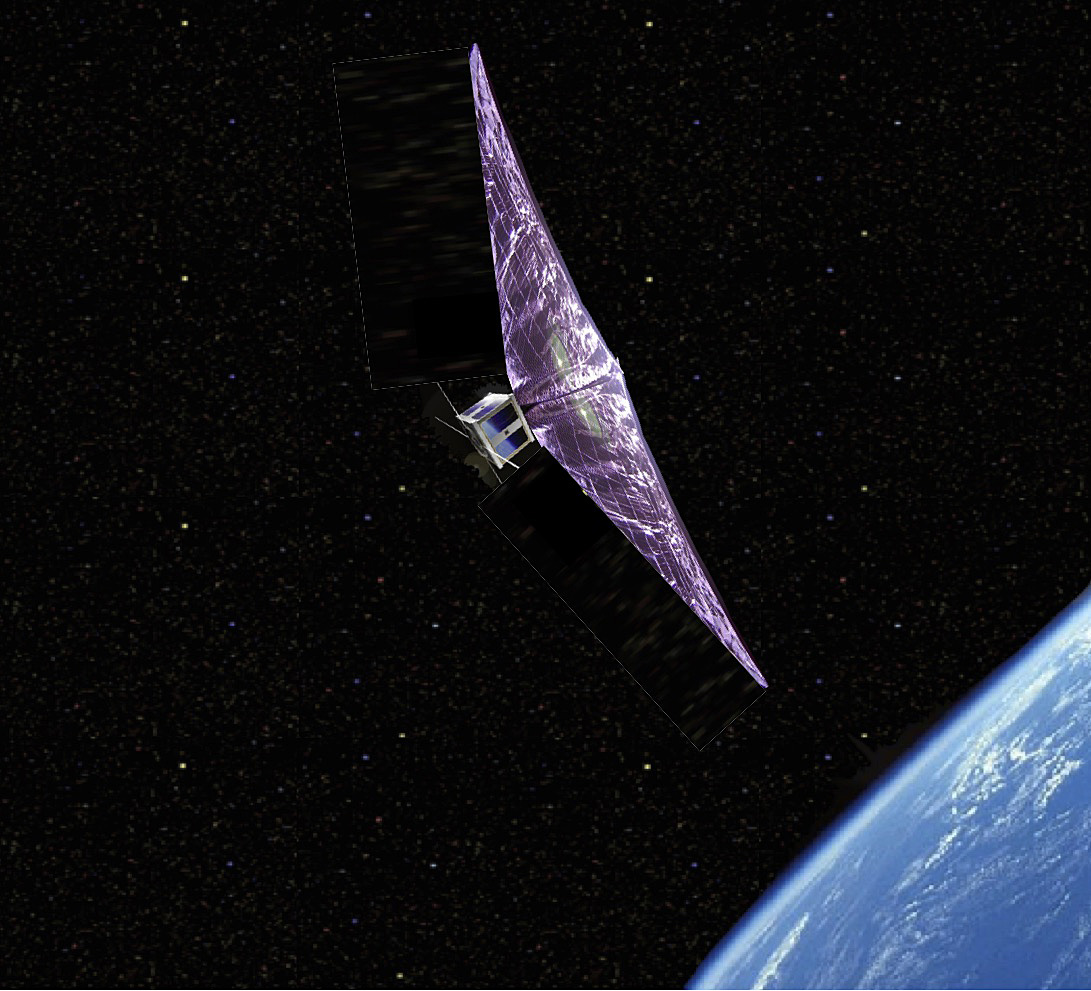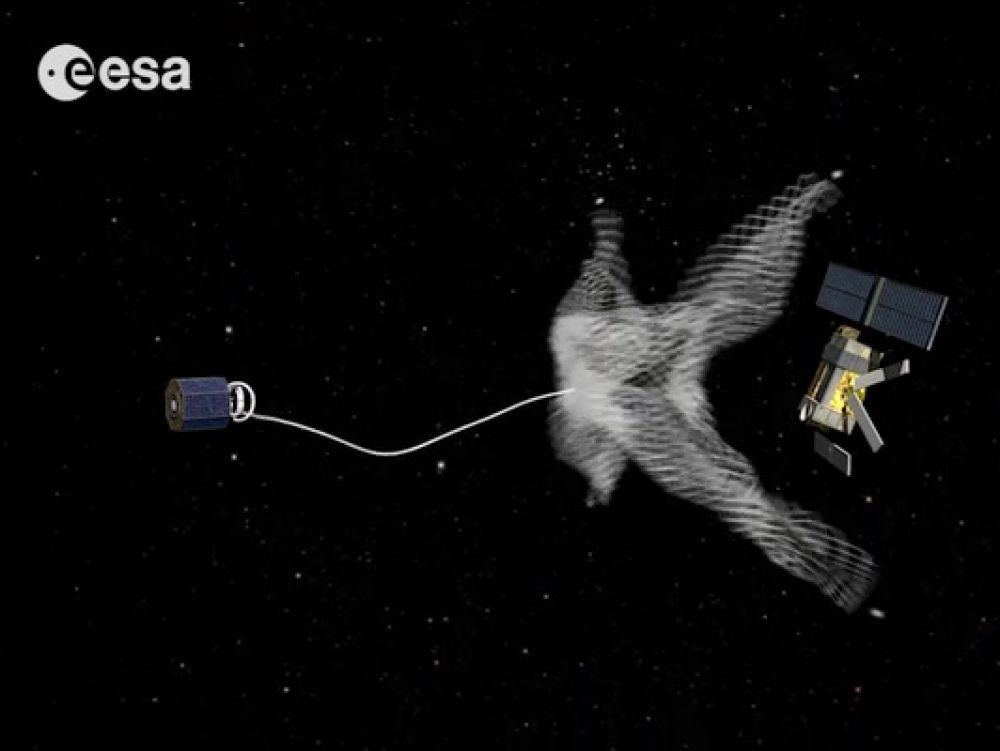The growing problem of space debris in LEO (Low-Earth Orbit) is garnering more and more attention. With thousands of satellites in orbit, and thousands more on the way, our appetite for satellites seems boundless. But every satellite has a shelf-life. What do we do with them when they’ve outlived their usefulness and devolve into simple, troublesome space debris?
Continue reading “Can We Use Special Sails To Bring Old Satellites Back Down To Earth?”Satellites Equipped With a Tether Would be Able to De-Orbit Themselves at the end of Their Life
There’s no denying it, we are facing an orbital debris problem! As of January 2019, the ESA’s Space Debris Office estimates that there are at least 34,000 pieces of large debris in Low Earth Orbit (LEO) – a combination of dead satellites, spent rocket stages, and other assorted bits of space junk. And with thousands of satellites scheduled to be launched in the next decade, that problem is only going to get worse.
This is a situation that cries out for solutions, especially when you consider the plans to commercialize LEO and start sending crewed missions to deep space in the coming years. A team of scientists from the Universidad Carlos III de Madrid (UC3M) has come up with a simple but elegant idea: equip future satellites with a tether system so they can de-orbit themselves at the end of their lives.
Continue reading “Satellites Equipped With a Tether Would be Able to De-Orbit Themselves at the end of Their Life”India Destroyed a Satellite With a Missile Last Week, and Pieces Were Thrown Into an Orbit That Risks the International Space Station
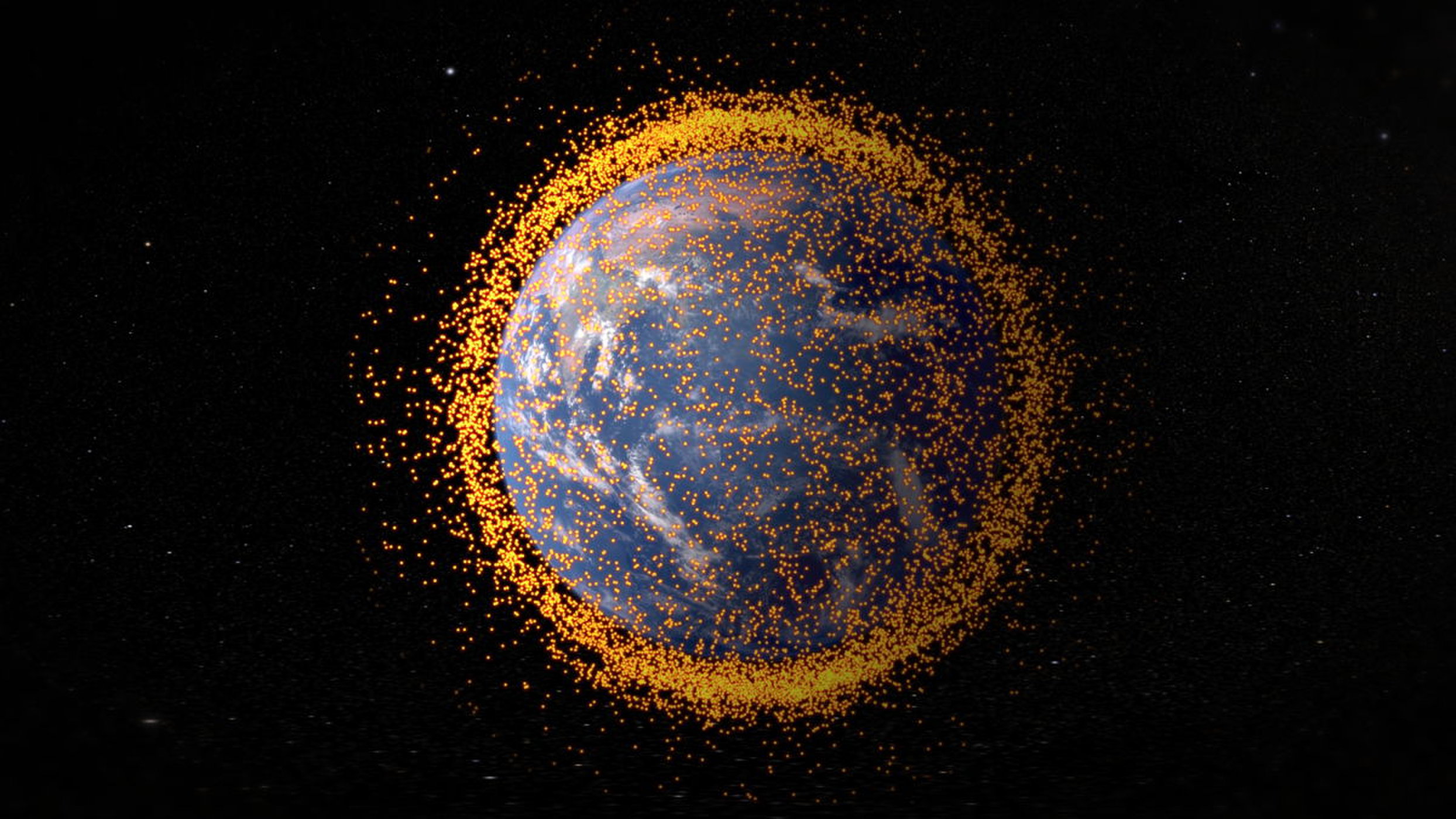
Last week, in a move that left many perplexed, the nation of India destroyed one of its own satellites. According to a statement made by Prime Minister Narendra Modi, this operation (“Mission Shakti”) was conducted using a new type of anti-satellite missile. With this one act, Modi claimed that India had “established itself as a space power”, effectively joining the United States, Russia and China.
Unfortunately, this demonstration has created a cloud of orbital debris in Low Earth Orbit (LEO). According to a recent statement made by NASA Administrator Jim Bridenstine, this debris poses an “unacceptable” threat to the International Space Station. In this sense, by flexing its muscle as a space power, India may have caused some serious disruption to international efforts in space.
Continue reading “India Destroyed a Satellite With a Missile Last Week, and Pieces Were Thrown Into an Orbit That Risks the International Space Station”British Satellite Tests its Space Junk Harpoon
Last summer, a new type of debris-hunting satellite was released from the International Space Station (ISS). It’s known as the RemoveDebris spacecraft, a technology-demonstrator developed by Surrey Satellite Technology Ltd and the Surrey Space Center. The purpose of this satellite is to test whether satellites equipped with targeting software, a debris net and a harpoon are effective at combating space debris.
For the past few months, this spacecraft has been conducting a series of Active Debris Removal (ADR) exercises. About a week ago, according to a recent statement, the RemoveDebris satellite tested out its harpoon for the first time. As you can see from the video, the satellite successfully demonstrated its harpoon system and verified its ability to secure space debris and keep it from flying away.
Continue reading “British Satellite Tests its Space Junk Harpoon”Micrometeorite Damage Under the Microscope
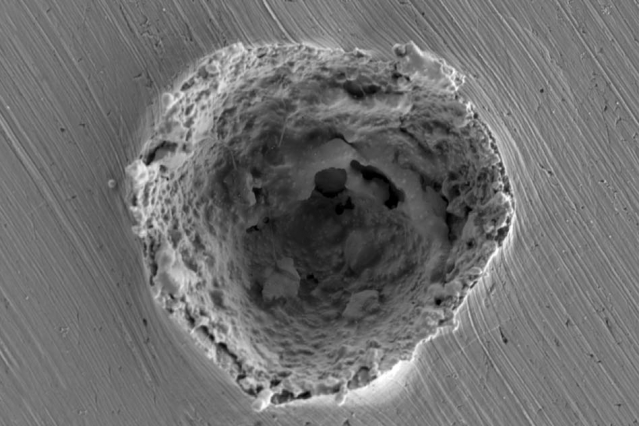
If there’s one thing that decades of operating in Low Earth Orbit (LEO) has taught us, it is that space is full of hazards. In addition to solar flares and cosmic radiation, one of the greatest dangers comes from space debris. While the largest bits of junk (which measure more than 10 cm in diameter) are certainly a threat, the real concern is the more than 166 million objects that range in size from 1 mm to 1 cm in diameter.
While tiny, these bits of junk can reach speeds of up to 56,000 km/h (34,800 mph) and are impossible to track using current methods. Because of their speed, what happens at the moment of impact has never been clearly understood. However, a research team from MIT recently conducted the first detailed high-speed imaging and analysis of the microparticle impact process, which will come in handy when developing space debris mitigation strategies. Continue reading “Micrometeorite Damage Under the Microscope”
A New Solution to the Space Junk Problem. Spacecraft with Plasma Beams to Force Space Junk to Burn Up
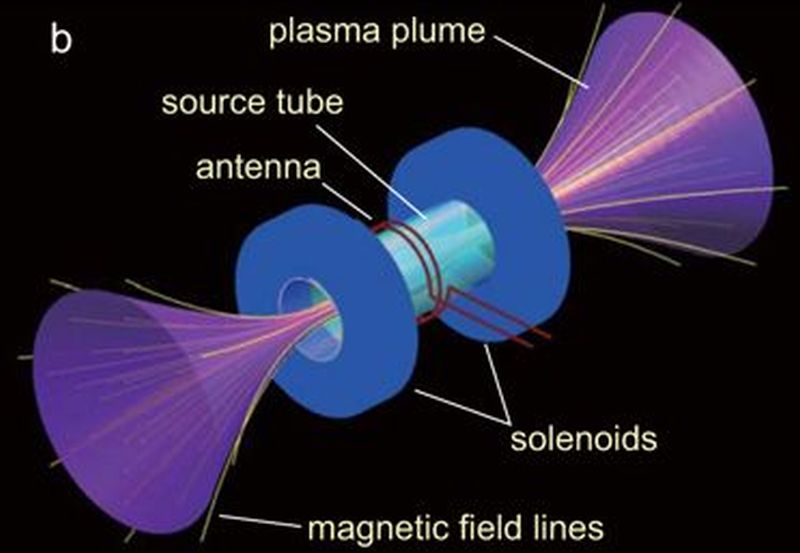
Space junk is a growing problem. For decades we have been sending satellites into orbit around Earth. Some of them de-orbit and burn up in Earth’s atmosphere, or crash into the surface. But most of the stuff we send into orbit is still up there.
This is becoming an acute problem as years go by and we launch more and more hardware into orbit. Since the very first satellite—Sputnik 1—was launched into orbit in 1957, over 8000 satellites have ben placed in orbit. As of 2018, an estimated 4900 are still in orbit. About 3000 of those are not operational. They’re space junk. The risk of collision is growing, and scientists are working on solutions. The problem will compound itself over time, as collisions between objects create more pieces of debris that have to be dealt with.
A Satellite With a Harpoon, Net and Drag Sail to Capture Space Junk is in Orbit and Will be Tested Soon
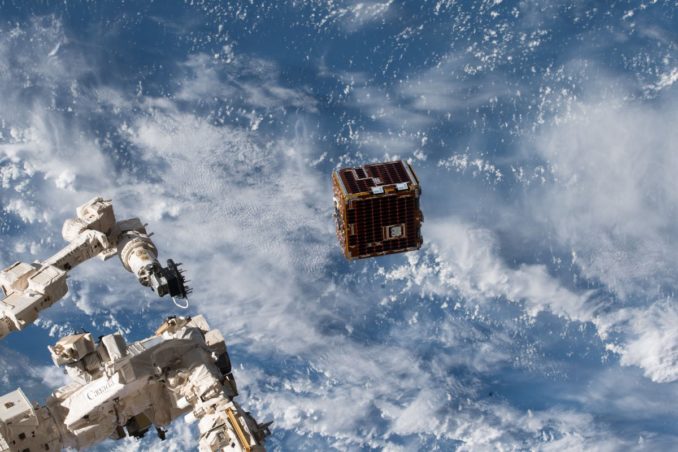
After almost seventy years of spaceflight, space debris has become a rather serious problem. This junk, which floats around in Low Earth Orbit (LEO), consists of the spent first rocket stages and non-functioning satellites and poses a major threat to long-term missions like the International Space Station and future space launches. And according to numbers released by the Space Debris Office at the European Space Operations Center (ESOC), the problem is only getting worse.
In addition, space agencies and private aerospace companies hope to launch considerably more in the way of satellites and space habitats in the coming years. As such, NASA has begun experimenting with a revolutionary new idea for removing space debris. It is known as the RemoveDebris spacecraft, which recently deployed from the ISS to conduct a series of Active Debris Removal (ADR) technology demonstrations.
This satellite was assembled by Surrey Satellite Technology Ltd. and the Surrey Space Center (at the University of Surrey in the UK) and contains experiments provided by multiple European aerospace companies. It measures roughly 1 meter (3 feet) on a side and weighs about 100 kg (220 lbs), making it the largest satellite deployed to the ISS to date.
The purpose of the RemoveDebris spacecraft is to demonstrate the effectiveness of debris nets and harpoons at capturing and removing space debris from orbit. As Sir Martin Sweeting, the Chief Executive of SSTL, said in a recent statement:
“SSTL’s expertise in designing and building low cost, small satellite missions has been fundamental to the success of RemoveDEBRIS, a landmark technology demonstrator for Active Debris Removal missions that will begin a new era of space junk clearance in Earth’s orbit.”
Aside from the Surrey Space Center and SSTL, the consortium behind the RemoveDebris spacecraft includes Airbus Defense and Space – the world’s second largest space company – Airbus Safran Launchers, Innovative Solutions in Space (ISIS), CSEM, Inria, and Stellenbosch University. The spacecraft, according to the Surrey Space Center’s website, consists of the following:
“The mission will comprise of a main satellite platform (~100kg) that once in orbit will deploy two CubeSats as artificial debris targets to demonstrate some of the technologies (net capture, harpoon capture, vision-based navigation, dragsail de-orbitation). The project is co-funded by the European Commission and the project partners, and is led by the Surrey Space Centre (SSC), University of Surrey, UK.”
For the sake of the demonstration, the “mothership” will deploy two cubesates which will simulate two pieces of space junk. For the first experiment, one of the CubeSats – designated DebrisSat 1 – will inflate its onboard balloon in order to simulate a larger piece of junk. The RemoveDebris spacecraft will then deploy its net to capture it, then guide it into the Earth’s atmosphere where the net will be released.
The second CubeSat, named DebrisSat 2, will be used to test the mothership’s tracking and ranging lasers, its algorithms, and its vision-based navigation technology. The third experiment, which will test the harpoon’s ability to capture orbiting space debris, is set to take place next March. For legal reasons, the harpoon will not be tested on an actual satellite, and will instead consist of the mothership extending an arm with a target on the end.
The harpoon will then be fired on a tether at 20 meters per second (45 mph) to tests it accuracy. After being launched to the station back on April 2nd, the satellite was deployed from the ISS’ Japanese Kibo lab module on June 20th by the stations’ Canadian robotic arm. As Guillermo Aglietti, the director of the Surrey Space Center, explained in an interview with SpaceFlight Now before the spacecraft was launched to the ISS:
“The net, as a way to capture debris, is a very flexible option because even if the debris is spinning, or has got an irregular shape, to capture it with a net is relatively low-risk compared to … going with a robotic arm, because if the debris is spinning very fast, and you try to capture it with a robotic arm, then clearly there is a problem. In addition, if you are to capture the debris with a robotic arm or a gripper, you need somewhere you can grab hold of your piece of debris without breaking off just a chunk of it.”
The net experiment is currently scheduled for September of 2018 while the second experiment is scheduled for October. When these experiments are complete, the mothership will deploy its dragsail to act as a braking mechanism. This expandable sail will experience collisions with air molecules in the Earth’s outer atmosphere, gradually reducing its orbit until it enters the denser layers of Earth’s atmosphere and burns up.
This sail will ensure that the spacecraft deorbits within eights weeks of its deployment, rather than the estimated two-and-half years it would take to happen naturally. In this respect, the RemoveDebris spacecraft will demonstrate that it is capable of tackling the problem of space debris while not adding to it.
In the end, the RemoveDebris spacecraft will test a number of key technologies designed to make orbital debris removal as simple and cost-effective as possible. If it proves effective, the ISS could be receiving multiple RemoveDebris spacecraft in the ftureu, which could then be deployed gradually to remove larger pieces of space debris that threaten the station and operational satellites.
Conor Brown is the external payloads manager of Nanoracks LLC, the company that developed the Kaber system aboard the Kibo lab module to accommodate the increasing number of MicroSats being deployed from the ISS. As he expressed in a recent statement:
“It’s wonderful to have helped facilitate this ground-breaking mission. RemoveDebris is demonstrating some extremely exciting active debris removal technologies that could have a major impact to how we manage space debris moving forward. This program is an excellent example of how small satellite capabilities have grown and how the space station can serve as a platform for missions of this scale. We’re all excited to see the results of the experiments and impact this project may have in the coming years.”
In addition to the RemoveDebris spacecraft, the ISS recently received a new tool for detecting space debris. This is known as the Space Debris Sensor (SDS), a calibrated impact sensor mounted on the exterior of the station to monitor impacts caused by small-scale space debris. Coupled with technologies designed to clean up space debris, improved monitoring will ensure that the commercialization (and perhaps even colonization) of LEO can begin.
Further Reading: Spaceflight Now, RemoveDEBRIS
Tiangong-1 Splashes Down in the Pacific Ocean
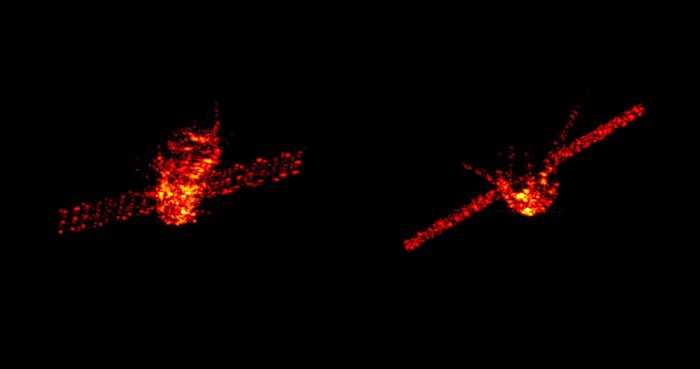
Over the weekend, multiple space agencies’ had their instruments fixed on the skies as they waited for the Tiangong-1 space station to reenter our atmosphere. For the sake of tracking the station’s reentry, the ESA hosted the 2018 Inter Agency Space Debris Coordination Committee, an annual exercise that consists of experts from 13 space agencies taking part in a joint tracking exercise.
And on April 2nd, 02:16 CEST (April 1st, 17:16 PST), the US Air Force confirmed the reentry of the Tiangong-1 over the Pacific Ocean. As hoped, the station crashed down close to the South Pacific Ocean Unpopulated Area (SPOUA), otherwise known as the “Spaceship Cemetery”. This region of the Pacific Ocean has long been used by space agencies to dispose of spent spacecraft after a controlled reentry.
The confirmation came from the Joint Force Space Component Command (JFSCC) on April 2nd, 0:400 CEST (April 1st, 19:00 PST). Using the Space Surveillance Network sensors and their orbital analysis system, they were able to refine their predictions and provide more accurate tracking as the station’s reentry time approached. The USAF regularly shares information with the ESA regarding its satellites and debris tracking.
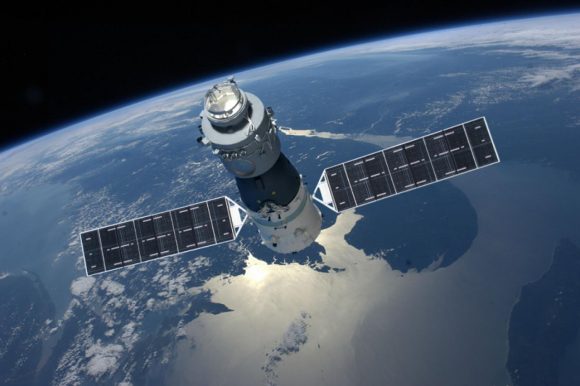
As with the ESA’s coordination with other space agencies and European member states, JFSCC’s efforts include counterparts in Australia, Canada, France, Germany, Italy, Japan, South Korea, and the United Kingdom. As Maj. Gen. Stephen Whiting, the Deputy Commander of the JFSCC and Commander of the 14th Air Force, indicated in a USAF press release:
“The JFSCC used the Space Surveillance Network sensors and their orbital analysis system to confirm Tiangong-1’s reentry, and to refine its prediction and ultimately provide more fidelity as the reentry time approached. This information is publicly-available on USSTRATCOM’s website www.Space-Track.org. The JFSCC also confirmed reentry through coordination with counterparts in Australia, Canada, France, Germany, Italy, Japan, South Korea, and the United Kingdom.”
The information is available on U.S. Strategic Command’s (USSTRATCOM) website – www.Space-Track.org. Holger Krag, the head of ESA’s Space Debris Office, confirmed the reentry of Tiangong-1 shortly thereafter on the ESA’s Rocket Science Blog. As he stated, the reentry was well within ESA’s earlier reentry forecast window – which ran from April 1st 23:00 UTC to 03:00 UTC on April 2nd (April 2nd, 01:00 CEST to 05:00 CEST):
“According to our experience, their assessment is very reliable. This corresponds to a geographic latitude of 13.6 degrees South and 164.3 degrees West – near American Samoa in the Pacific, near the international date Line. Both time and location are well within ESA’s last prediction window.”
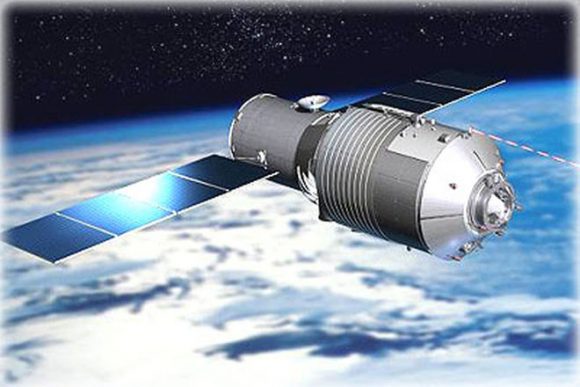
China’s Manned Space Agency (CMSA) also made a public statement about the station’s reenty:
“According to the announcement of China Manned Space Agency (CMSA), through monitoring and analysis by Beijing Aerospace Control Center (BACC) and related agencies, Tiangong-1 reentered the atmosphere at about 8:15 am, 2 April, Beijing time. The reentry falling area located in the central region of South Pacific. Most of the devices were ablated during the reentry process.”
As Krag noted, the ESA’s monitoring efforts were very much reliant on its campaign partners from around the world. In fact, due to when the station entered the Earth’s atmosphere, it was no longer visible to the Fraunhofer FHR institute’s Tracking and Imaging (TIRA) radar, which provides tracking services for the ESA’s Space Debris Office (SDO).
Had the station still been in orbit by 06:05 CEST (21:00 PST), it would have still been visible to the institute’s TIRA radar. Some unexpected space weather also played a role in the station’s reentry. On March 31st, the Sun’s activity spontaneously dropped, which delayed the Tiangong-1’s entry by about a day.
“This illustrates again the dependence that Europe has on non-European sources of information to properly and accurately manage space traffic, detect reentries such as Tiangong-1 and track space debris that remains in orbit – which routinely threatens ESA, European and other national civil, meteorological, scientific, telecomm and navigation satellites,” said Krag.
While news of the Tiangong-1’s orbital decay caused its share of concern, the reentry happened almost entirely as predicted and resulted in no harm. And once again, it demonstrated how international cooperation and public outreach is the best defense against space-related hazards.
Further Reading: Vandenburg Air Force Base,
Spacecraft Shields Will Need to be Tough. Here’s an Aluminum Bullet Shattering a Shield at 7 km/s
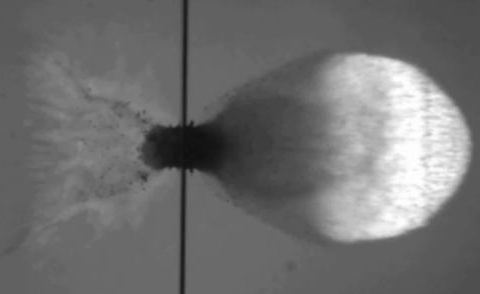
After sixty years of space agencies sending rockets, satellites and other missions into orbit, space debris has become something of a growing concern. Not only are there large pieces of junk that could take out a spacecraft in a single hit, but there are also countless tiny pieces of debris traveling at very high speeds. This debris poses a serious threat to the International Space Station (ISS), active satellites and future crewed missions in orbit.
For this reason, the European Space Agency is looking to develop better debris shielding for the ISS and future generations of spacecraft. This project, which is supported through the ESA’s General Support Technology Programme, recently conducted ballistics tests that looked at the efficiency of new fiber metal laminates (FMLs), which may replace aluminum shielding in the coming years.
To break it down, any and all orbital missions – be they satellites or space stations – need to be prepared for the risk of high-speed collisions with tiny objects. This includes the possibility of colliding with human-made space junk, but also includes the risk of micro-meteoroid object damage (MMOD). These are especially threatening during intense seasonal meteoroid streams, such as the Leonids.
While larger pieces of orbital debris – ranging from 5 cm (2 inches) to 1 meter (1.09 yards) in diameter – are regularly monitored by NASA and and the ESA’s Space Debris Office, the smaller pieces are undetectable – which makes them especially threatening. To make matters worse, collisions between bits of debris can cause more to form, a phenomena known as the Kessler Effect.
And since humanity’s presence Near-Earth Orbit (NEO) is only increasing, with thousands of satellites, space habitats and crewed missions planned for the coming decades, growing levels of orbital debris therefore pose an increasing risk. As engineer Andreas Tesch explained:
“Such debris can be very damaging because of their high impact speeds of multiple kilometres per second. Larger pieces of debris can at least be tracked so that large spacecraft such as the International Space Station can move out of the way, but pieces smaller than 1 cm are hard to spot using radar – and smaller satellites have in general fewer opportunities to avoid collision.”
To see how their new shielding would hold up to space debris, a team of ESA researchers recently conducted a test where a 2.8 mm-diameter aluminum bullet was fired at sample of spacecraft shield – the results of which were filmed by a high-speed camera. At this size, and with a speed of 7 km/s, the bullet effectively simulated the impact energy that a small piece of debris would have as if it came into contact with the ISS.
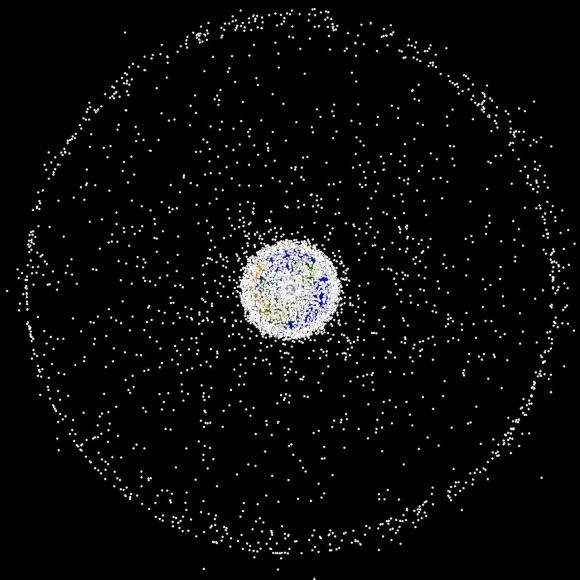
As researcher Benoit Bonvoisin explained in a recent ESA press release:
“We used a gas gun at Germany’s Fraunhofer Institute for High-Speed Dynamics to test a novel material being considered for shielding spacecraft against space debris. Our project has been looking into various kinds of ‘fibre metal laminates’ produced for us by GTM Structures, which are several thin metal layers bonded together with composite material.”
As you can see from the video (posted above), the solid aluminum bullet penetrated the shield but then broke apart into a could of fragments and vapor, which are much easier for the next layer of armor to capture or deflect. This is standard practice when dealing with space debris and MMOD, where multiple shields are layered together to adsorb and capture the impact so that it doesn’t penetrate the hull.
An common variant of this is known as the ‘Whipple shield’, which was originally devised to guard against comet dust. This shielding consists of two layers, a bumper and a rear wall, with a mutual distance of 10 to 30 cm (3.93 to 11.8 inches). In this case, the FML, which is produced for the ESA by GTM Structures BV (a Netherlands-based aerospace company), consists of several thin metal layers bonded together with a composite material.
Based on this latest test, the FML appears to be well-suited at preventing damage to the ISS and future space stations. As Benoit indicated, he and his colleagues now need to test this shielding on other types of orbital missions. “The next step would be to perform in-orbit demonstration in a CubeSat, to assess the efficiency of these FMLs in the orbital environment,” he said.
And be sure to enjoy this video from the ESA’s Orbital Debris Office:
Further Reading: ESA
In mid-March, the Chinese Tiangong-1 Space Station is Going to Come Crashing Back Down to Earth… Somewhere
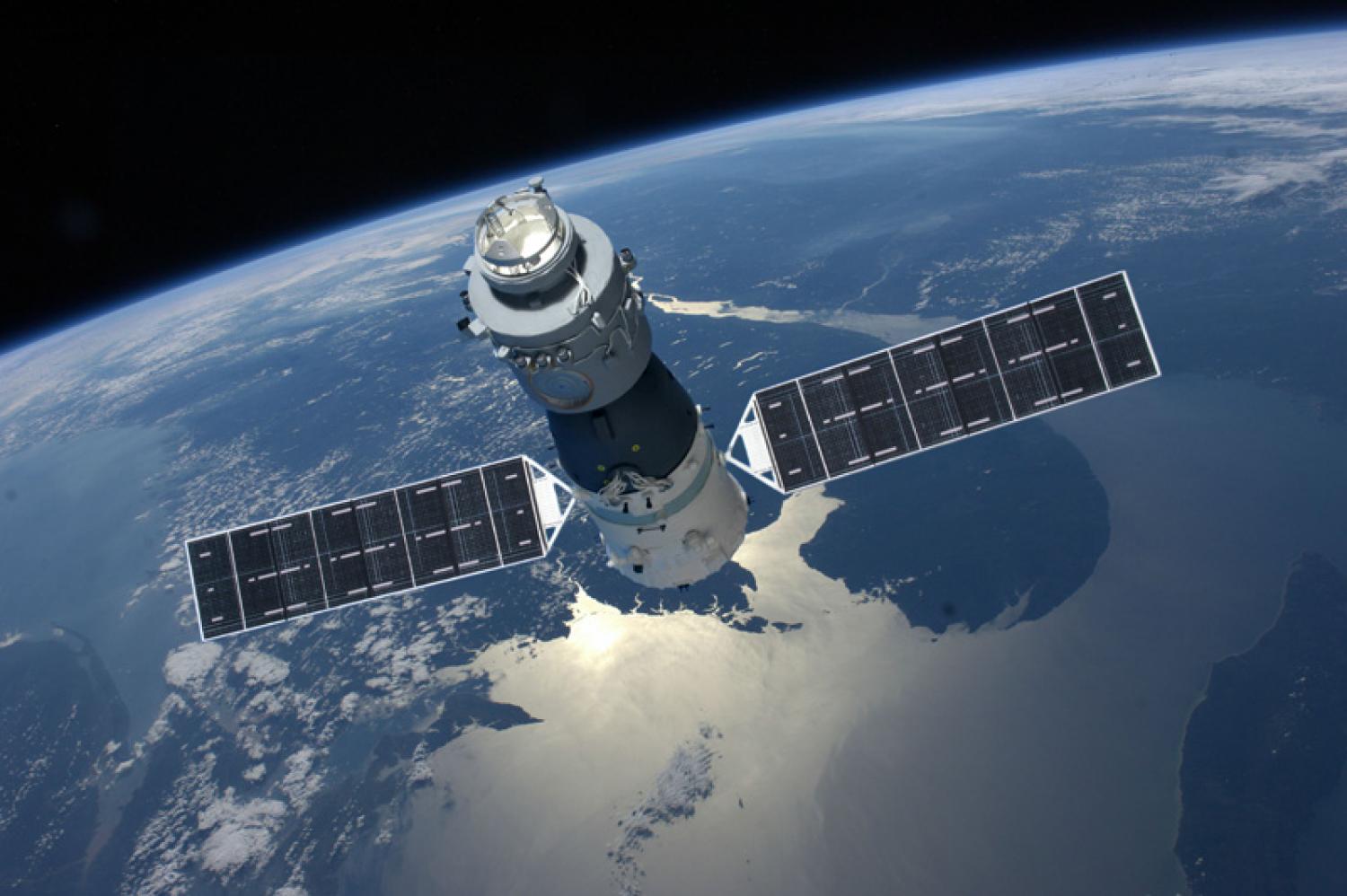
In September of 2011, China officially joined the Great Powers in Space club, thanks to the deployment of their Tiangong-1 space station. Since then, this prototype station has served as a crewed orbital laboratory and an experimental testbed for future space stations. In the coming years, China hopes to build on the lessons learned with Tiangong-1 to create a larger, modular station in 2023 (similar to the International Space Station).
Though the station’s mission was originally meant to end in 2013, the China National Space Agency extended its service to 2016. By September of 2017, the Agency acknowledged that they had lost control of the station and indicated that it would fall to Earth later in the year. According to the latest updates from satellite trackers, Tianglong-1 is likely to be reentering our atmosphere in March of 2018.
Given the fact that the station measures 10 by 3.35 meters (32.8 by 11 ft), weighs a hefty 8,506 kg (18,753 lb) and was built from very durable construction materials, there are naturally concerns that some of it might survive reentry and reach the surface. But before anyone starts worrying about space debris falling on their heads, there are a few things that need to be addressed.
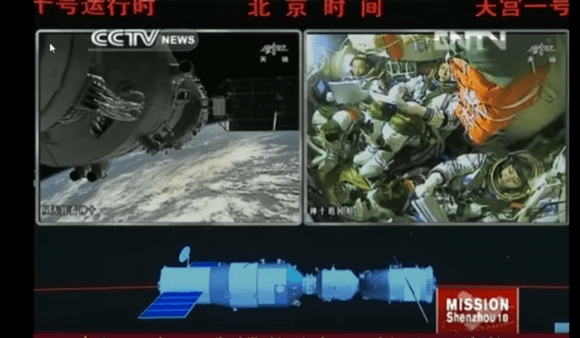
For starters, in the history of space flight, there has not been a single confirmed death caused by falling space debris. Tthanks to the development of modern tracking and early warning systems, we are also more prepared than at any time in our history for the threat of falling debris. Statistically speaking, you are more likely to be hit by falling airplane debris or eaten by a shark.
Second, the CNSA has emphasized that the reentry is very unlikely to pose a threat to commercial aviation or cause any impact damage on the surface. As Wu Ping – the deputy director of the manned space engineering office – indicated at a press conference back on September 14th, 2017: “Based on our calculation and analysis, most parts of the space lab will burn up during falling.”
In addition, The Aerospace Corporation, which is currently monitoring the reentry of Tiangong-1, recently released the results of their comprehensive analysis. Similar to what Wu stated, they indicated that most of the station will burn up on reentry, though they acknowledged that there is a chance that small bits of debris could survive and reach the surface. This debris would likely fall within a region that is centered along the orbital path of the station (i.e. around the equator).
To illustrate the zones of highest risk, they produced a map (shown below) which indicates where the debris would be most likely to land. Whereas the blue areas (that make up one-third of the Earth’s surface) indicate zones of zero probability, the green area indicates a zone of lower probability. The yellow areas, meanwhile, indicates zones that have a higher probability, which extend a few degrees south of 42.7° N and north of 42.7° S latitude, respectively.
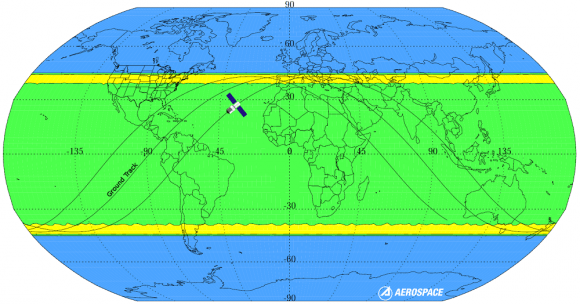
To add a little perspective to this analysis, the company also indicated the following:
“When considering the worst-case location (yellow regions of the map) the probability that a specific person (i.e., you) will be struck by Tiangong-1 debris is about one million times smaller than the odds of winning the Powerball jackpot. In the history of spaceflight, no known person has ever been harmed by reentering space debris. Only one person has ever been recorded as being hit by a piece of space debris and, fortunately, she was not injured.”
Last, but not least, the European Space Agency’s Inter Agency Space Debris Coordination Committee (IADC) will be monitoring the reentry. In fact, the IADC – which is made up of space debris and other experts from NASA, the ESA, JAXA, ISRO, KARI, Roscosmos and the China National Space Administration – will be using this opportunity to conduct a test campaign.
During this campaign, participants will combine their predictions of the reentry’s time window, which are based on respective tracking datasets obtained from radar and other sources. Ultimately, the purpose of the campaign is to improve prediction accuracy for all member states and space agencies. And so far, their predictions also indicate that there is little cause for concern.
As Holger Krag, the Head of ESA’s Space Debris Office, indicated in a press statement back in November:
“Owing to the geometry of the station’s orbit, we can already exclude the possibility that any fragments will fall over any spot further north than 43ºN or further south than 43ºS. This means that reentry may take place over any spot on Earth between these latitudes, which includes several European countries, for example. The date, time and geographic footprint of the reentry can only be predicted with large uncertainties. Even shortly before reentry, only a very large time and geographical window can be estimated.”
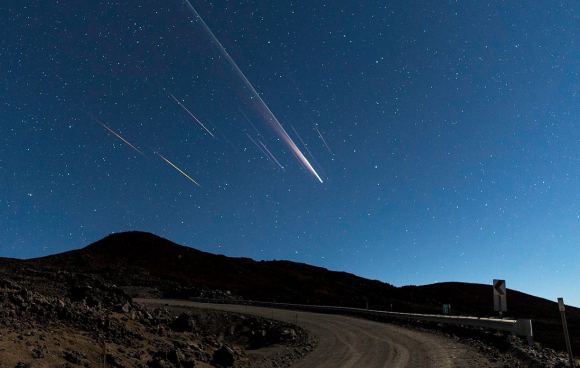
The ESA’s Space Debris Office – which is based at the European Space Operations Centre in Darmstadt, Germany – will follow this campaign in February with an international expert workshop. This workshop (which will run from February 28th to March 1st, 2018) will focus on reentry predictions and atmospheric break-up studies and allow experts in the field of space debris monitoring to share their latest findings and research.
In the current age of renewed space exploration and rapidly improving technology, every new development in space is an opportunity to test the latest instruments and methods. The reentry of Tiangong-1 is a perfect example, where the reentry of a space station is being used to test our ability to predict falling space debris. It also highlights the need for tracking and monitoring, given that humanity’s presence in orbit is only going to increase in the coming years.
In the meantime, it would not be inadvisable to keep your eyes on the skies this coming March. While there is little chance that debris will pose a hazard, it is sure to be spectacular sight for people who live closer to the equator!
Further Reading: Aerospace.org, ESA, Xinhuanet

